Earth-Moon-Earth
Photograph Gallery
'JH1KRC' Mike Watanabe
Big NEWS!
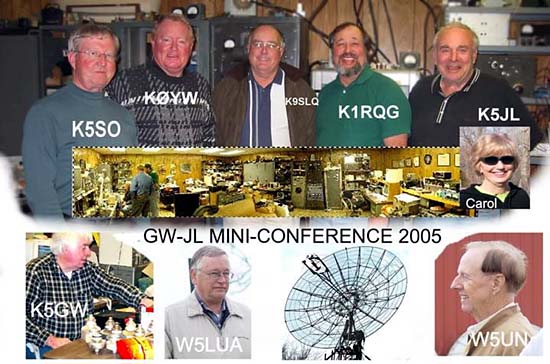 |
|
This group photo is come from Wayne, K9SLQ. All the members here are famous and quite active guys on 432 and/or 1296 MHz moon bounce.
Nice smile, and good to see you all!!
|
|---|
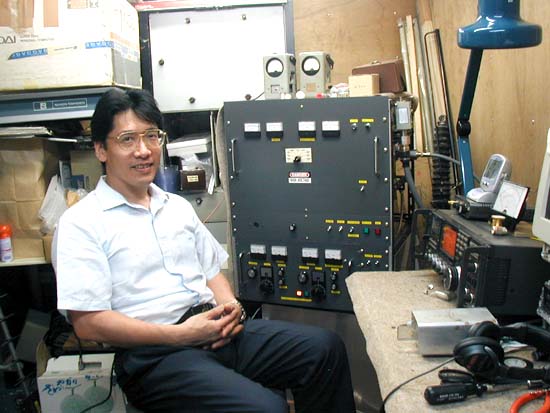 |
|
Mike Watanabe, JH1KRC, relax in the operating seat of the UHF/moon bounce shack, located in a rural agricultural area, the grid QM06aw. A home-brew two-band power amplifier unit makes big fan noise when 432 MHz or 1296 MHz is operated. The upper half contains TH(now NL)-327 cavity amplifier of DL9EBL design, 600 watts output on 23 cm. The middle stage section is 7213 cavity amplifiers ( two sets installed ) for 70 cm. Exciter/receiver IC-970D, installed with 250 Hz CW filter and audio 1KHz LC low pass filter in front of the smoothing filter designed by JE1BMJ, performs very pleasantly. The internal PTT circuit should have been cut or locked, not to damage the LNAs.
|
|---|
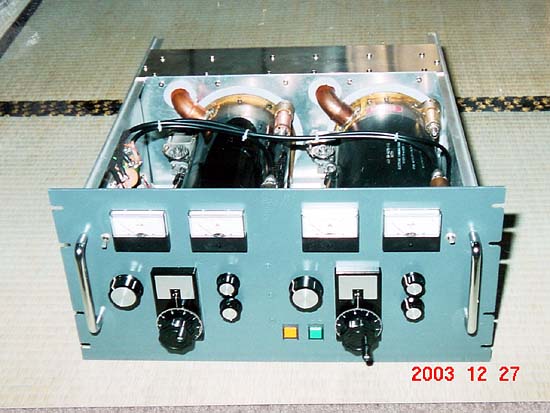 |
|
A couple of 7213 coaxial cavity amplifiers are installed in the 432 MHz unit. The left one is delived from JA9BOH, and the right one from K5JL. Presently they are not combined with, and each cavity produces 600 watts output with 50 watts drive very easily. Bauman's counter dials for the plate tune, larger knobs for the output coupling, and smaller knobs for the input tune and the driver taps. Meters can monitor the plate current, grid and screen currents of the each cavity.
|
|---|
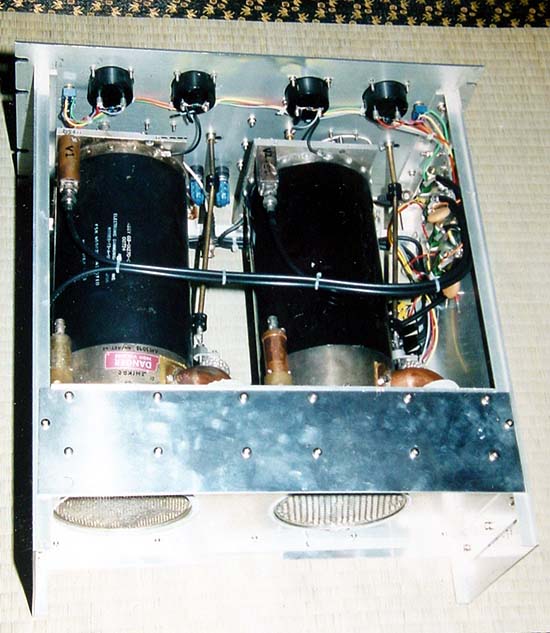 |
|
The rear view of the 7213 coaxial cavity amplifiers in a 19" cabinet. The high voltages and bias terminals are filtered and connected through high voltage MHV connectors. Cooling air is supplied to the air-tight chamber on the rear, and the exhaust comes out through the honeycomb materials. A huge fan is employed both for the cooling of plate fins and the input sections.
|
|---|
 | |
This cavity can produce 500 watts output with 45 watts drive in class C. In spite that JA telecom regulations require more than -60 dBc spurious suppression on this amateur band, my 7213 cavity originally produces -43 dBc at 2nd harmonic, and - 49 dBc at 3rd harmonic. It means some filters are
needed.
|
|---|
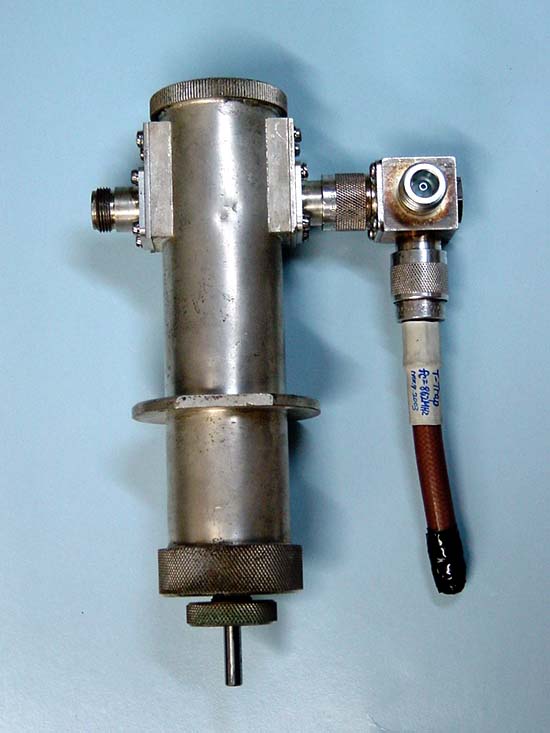 |
|
A simple quater-wave coax stub notch, made of RG-393/U teflon cable, short
end, and a quater wave link-coupled coaxial resonator will be useful. |
|---|
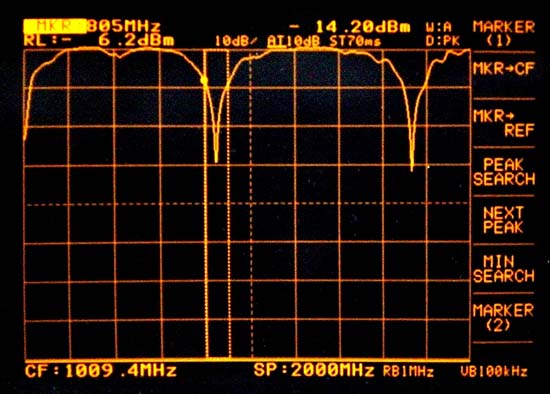
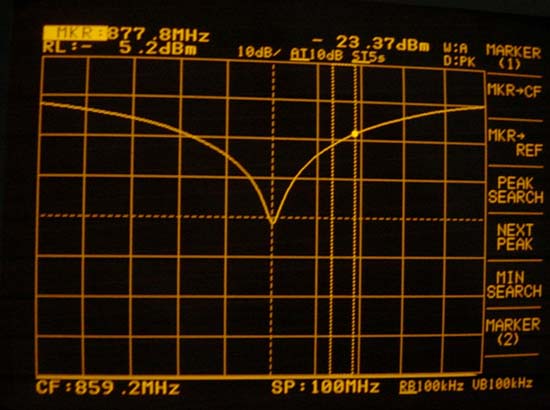 |
|
This short-end coax stub shows approximately -40 dB notches at 864 MHz and 1728 MHz. The 3rd harmonics on 1296 MHz should be considered separately. |
|---|
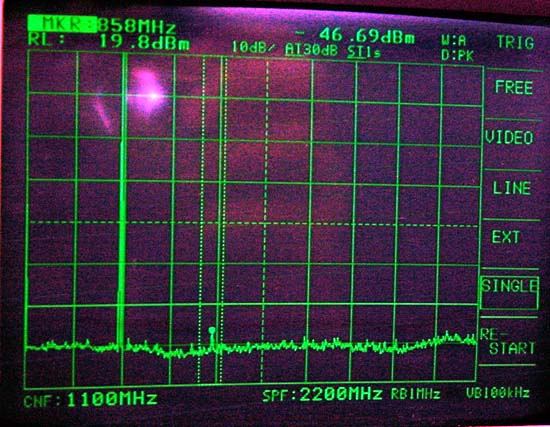 |
|
With the short stub notch and the BPF, 7213 cavity can get a clean output.500 watts in class C. |
|---|
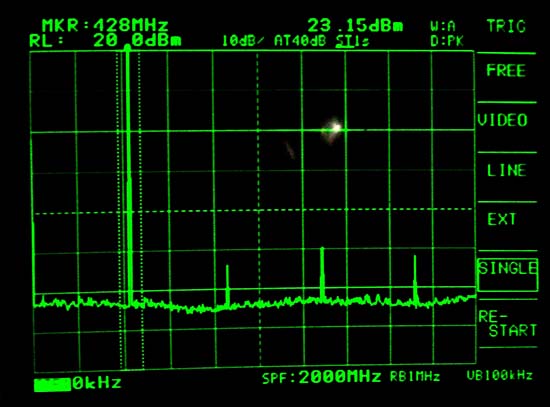 |
|
If you drive 7213 with 50 watts in the class AB1, you can get 1 KW output of relatively clean stectrum. But still you need some spurious suppression device to satisfy the telecom regulations. |
|---|
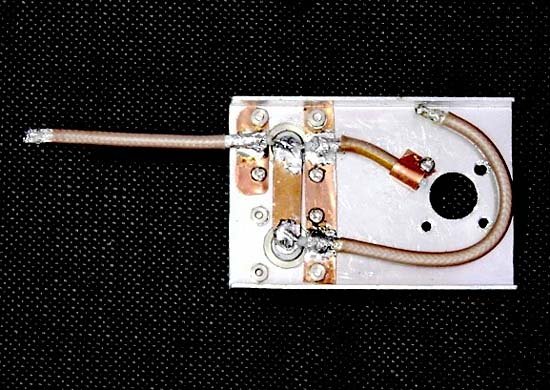
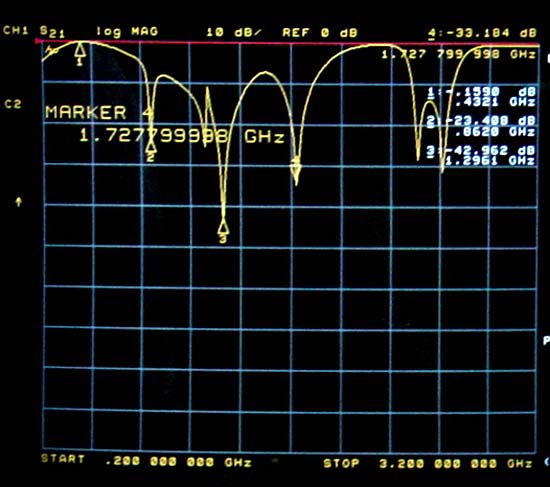

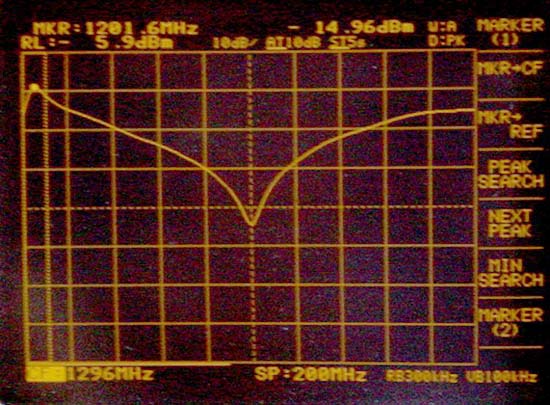

|
|
If you can use a tracking generator for adjustment, this double coax notch is available. A quater-wave short stub for the 2nd and 4th harmonics, and a one-sixth short stub and a one-twelfth open stub for the 3rd harmonics can make all of the harmonics problems clearly solved.
|
|---|
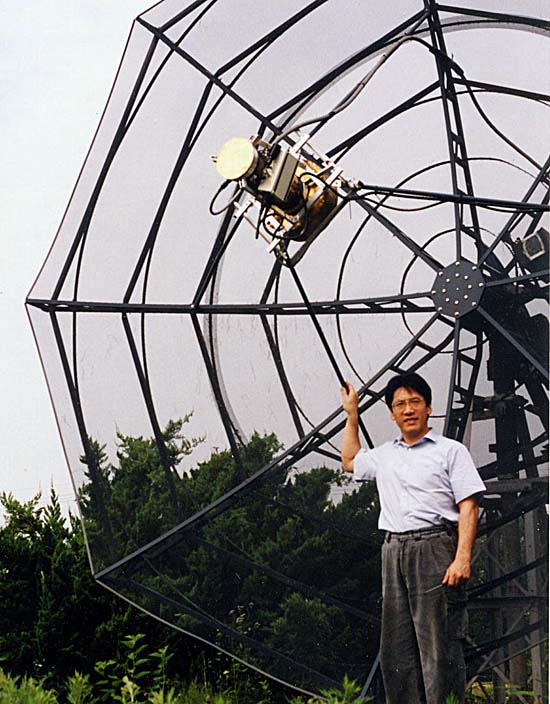 |
|
Paraclipse 14.5 feet (4.4 meters ) TVRO dish was delivered from Katsumi Kobayashi, a Japanese pioneer of the world satellite-TV watchers. This deep dish has an F/D=0.32, and the estimated gain 33 dBi with a half-power beam width of 3.8 degrees on 1296MHz. Moon tracking is visualized by a CCD camera, installed in a surplus bullet container, seen beside the dish hub.
|
|---|
 |
|
A full size circular feed horn of WA6PY design fits for this deep dish, F/D=0.32. More than 25 dB isolation between T/R ports, and well-tuned circularities make this dish performance almost perfect. The LNA of DJ9BV design and a T/R coax relay with 50 ohms termination are attached to the feed stem. A plastic water-proof construction box was useful for the container.
|
|---|
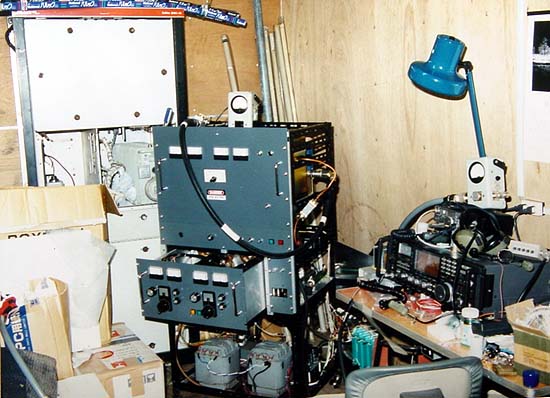 |
|
As always, something is going on. Sorry, but there is no time for the good -looking photos.
|
|---|
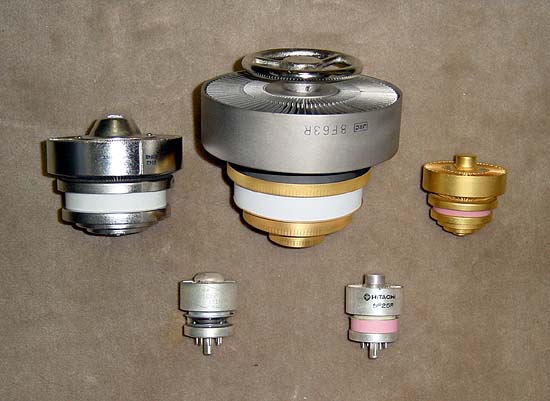 |
|
The tubes above, with the sizes of median, large, and small, in the same shapes, are the 7213 brothers. The large one is 8F63R, JRC, Pd=4500 watts, a Japanese 1 KW UHF TV tube of 1960's, and the small one is 5F60R, Hitachi, Pd=450 watts. See 4X150A and 5F25R/4CX250F below for comparison. Japanese electric companies produced a lot of fascinating tubes up to early 1980's, that must be remembered!!
|
|---|
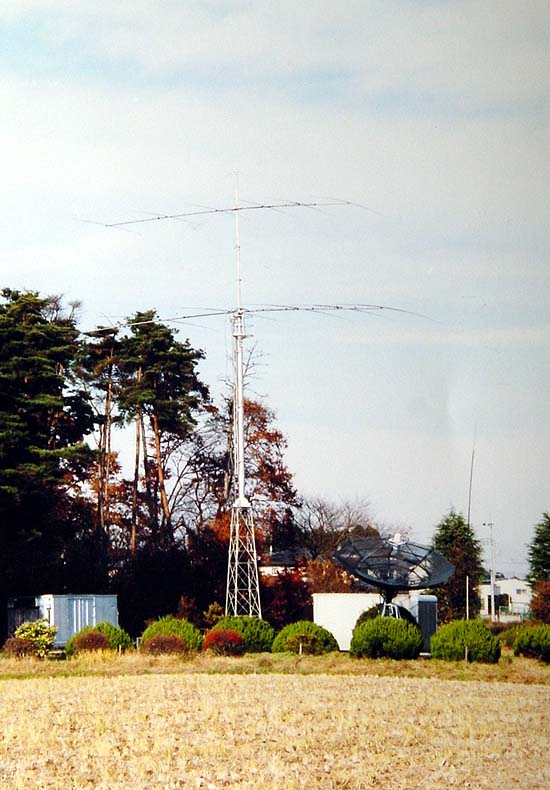 |
|
A special version of SKY-NEEDLE, 120ft at maximum, is delivered from Frank W6KPC, now equipped with six-element monobanders of Creative Design Co. for 15 and 20 meters bands each. These computer-optimized beam antennas show marvelously beautiful patterns
in this location.
|
|---|
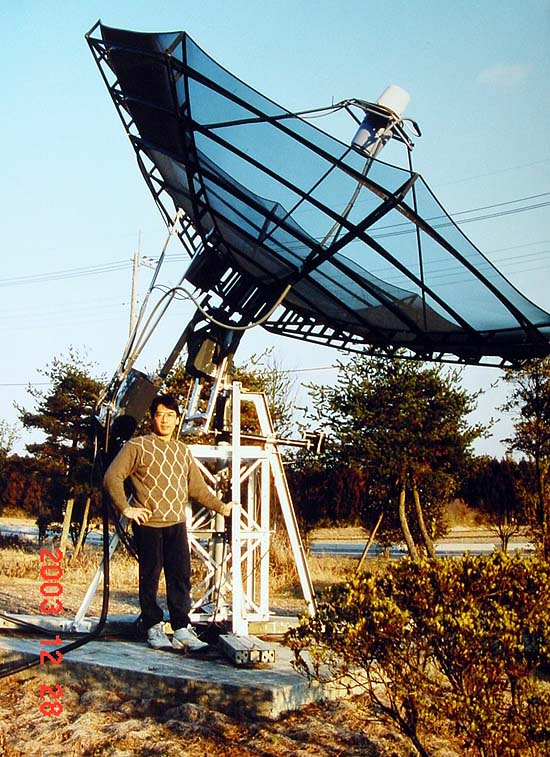 |
|
A loop feed with a reflector plate for 432MHz is installed. Bucket radomes efficiently cover the loop, coax relays and LNA on the opposite side of the reflector plate.
|
|---|
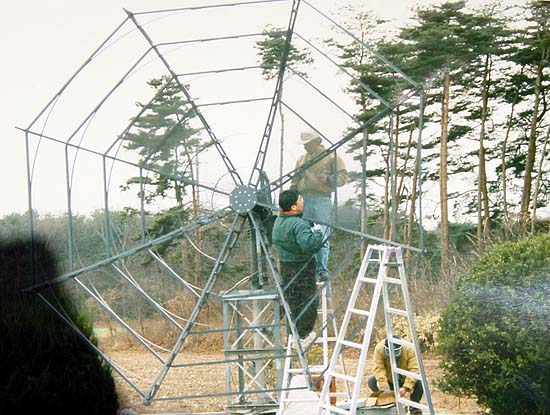 |
|
Some local friends helped to build up this station. Special thanks to JA1BAX, JA1TJO, JH1IYD, JS1OXF, and Sylvie JP1LAB - my XYL.
|
|---|
 |
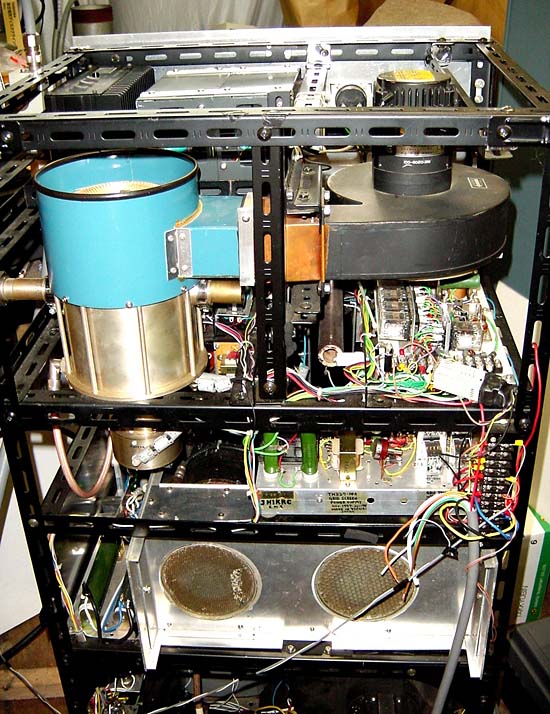 |
|
High power amplifiers: TH(NL)-327 cavity amplifier for 1296 MHz can produce 1 KW+ with the power gain approximately 7-8 times in class AB1-2. Two 7213 caviti amplifiers in the mid stage. The power transformers are derived from late-Saito, sk-JA1XAF.
|
|---|
 |
|
Andrew arrester for 900 MHz band is modified to be a 2nd harmonic notch filter for 1296 MHz. Originally it is a quater-wave short stub for the fundamental. Just putting a shorting material such as a piece of silver-plated copper mesh, taken out from a teflon coax, and adjust the shorting position so that the first notch frequency would be on the second harmonic frequency, 2592 MHz. This adjustment procedure requires careful and patient trials of several times, then you can get a good notch on the purpose frequency.
|
|---|
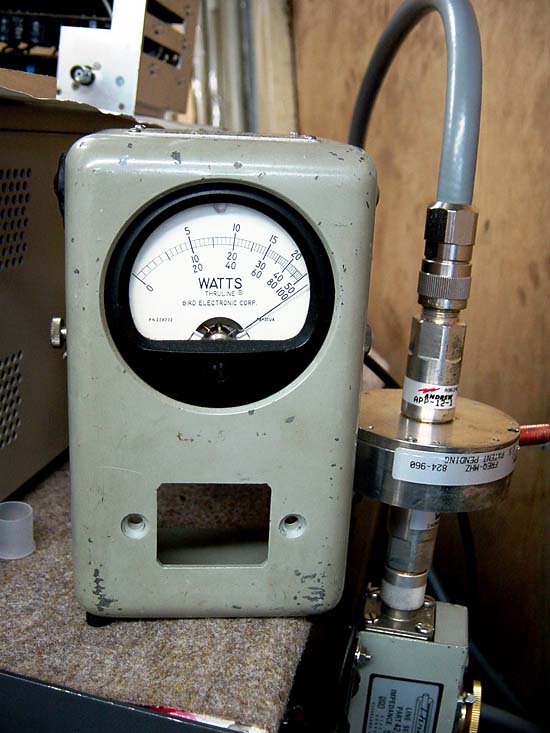 |
|
Andrew arrester can be a high power band ellimination filter (BEF=notch) for EME transmitter of this band. It easily gives more than 30 dB reduction on your 2nd harmonic spurious output. Good luck!
|
|---|
 |
|
Every EME operators certainly like bulky coax like this. Cables are easily got at almost free of charge, but the connnectors might cost a lot (even if you are lucky enough to find ones).
|
|---|
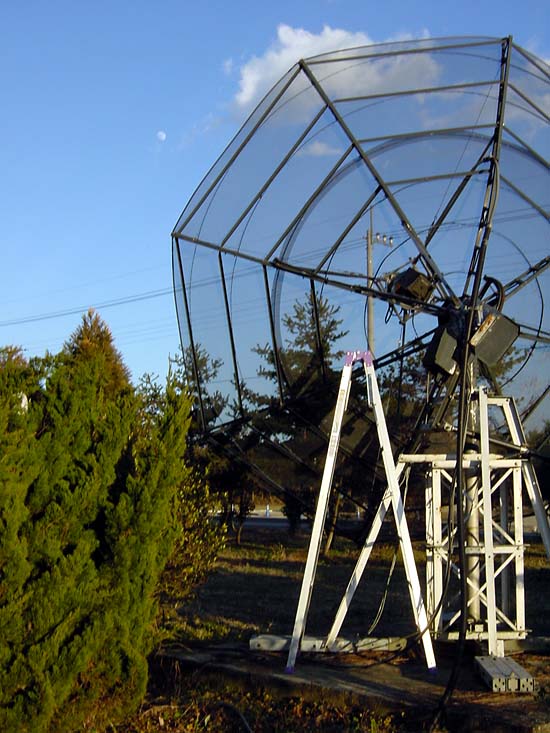 |
|
One hour after moon-rise
|
|---|
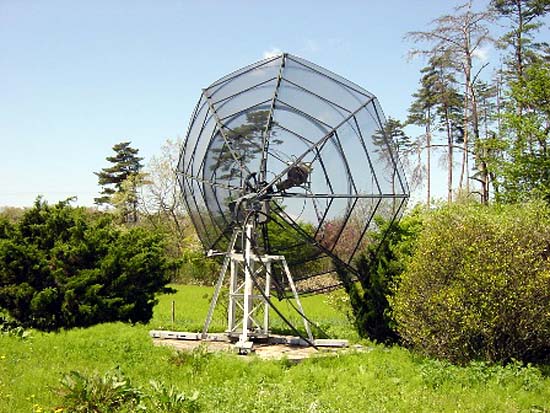 |
|
One hour before moon-set
|
|---|
 |
|
Mike JH1KRC and Jun JH4RHF on the airstrip of Pratas Island, BV9P, 1995.
|
|---|
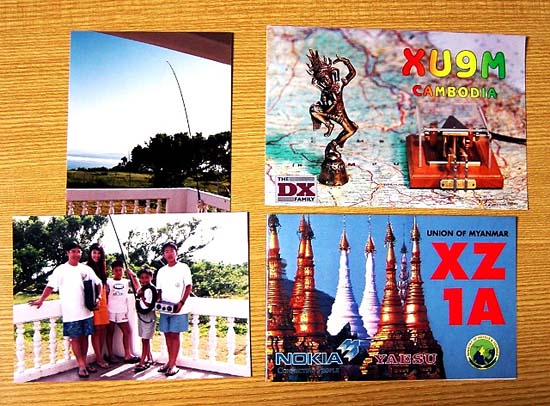 |
|
XU9M 1993, XZ9A 1995, and family trip to Sakishima Arch. AS-024 Okinawa, JH1KRC/JR6 1997.
|
|---|
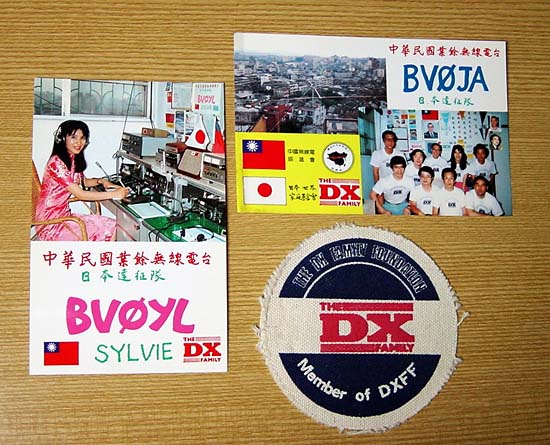 |
|
The DX Family Foundation of Japan produced and supported many of famous DX-peditions world-wide. As the first Japanese amateur delegate, BV0JA and BV0YL were operated from Taipei, June 1984. Of course Tim Chen BV2B is our good friend for years.
|
|---|
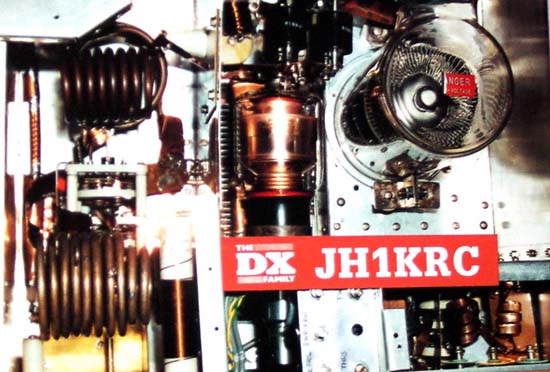 |
|
Mike is fond of building up and investigating the power amplifiers. 3CX3000A7 was one of the favorite tubes of Mike, first built in 1985, and later formally licensed for HF 1 KW output. This amplifier employs the Pai input tune circuit, Q of five (5), which is recommended for this bulky zero-bias tube to achieve a good IMDs. The 3rd order IMD of -40 dB at two-tone (500+500 watts) test is available. For good harmonic suppression, Pai-L output tune circuit is neccessary.
|
|---|
E-Mail

|

